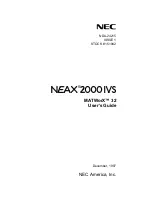
51
Profiler
User Manual
Gamma
The Gamma function is based on the native behavior of CRT monitors.
In CRTs, an electron beam excites red green and blue phosphors on the
tube’s surface. Depending from the intensity of the electron beam, the
phosphors glow more or less bright.
Yet the intensity is not directly proportional to the voltage that controls the
exciting electron beam. The ratio equals a gamma function. This gamma
function can easily be modified into a different gamma behavior.
In the early days of monitor calibration, it seemed a good idea to
calibrate a monitor to a gamma that is similar to the tonal response of
printed matter, to be precise, gamma 1,8 was the characteristic of an
Apple LaserWriter. Thus gamma 1.8 became the typical Apple monitor
gamma. On a PC, where you normally did your bookkeeping, wrote
letters and prepared presentations, a more contrasty characteristic was
desirable. Thus gamma 2.2 became the typical PC gamma.
In a color managed environment these historic gammas do not make
sense any more. For one, because LCD monitors show a completely
different native tonal response, on the other hand the monitor profile
compensates for different tonal curves anyway. So it makes more sense
to calibrate your monitor to a tonal response curve that affects the data
you want to display the least: L*.
The only use of a gamma calibration is a workflow with data which need
to be displayed with a certain gamma or other tonal response curve
(e.g. video or web design = sRGB) out- side a color managed environ-
ment. In all other cases, L* calibration is the better choice.
Содержание SpectraView
Страница 1: ...User Manual When Colour is Critical ...
Страница 5: ...Chapter 1 Preface ...
Страница 7: ...Chapter 2 Installation and Licensing ...
Страница 16: ...Chapter 3 Quick Start ...
Страница 37: ...Chapter 4 Advanced ...
Страница 67: ...Chapter 5 Product information SpectraView Profiler 4 ...
















































